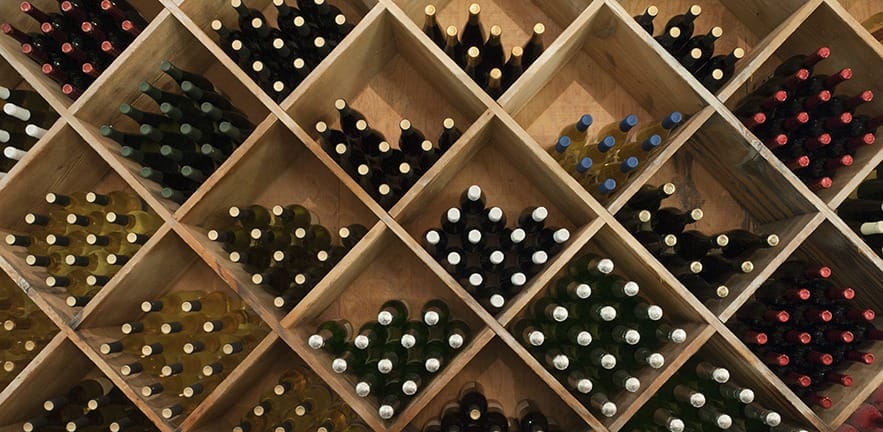When it comes to pricing, quality and customer expectation both matter, finds a study co-authored at Cambridge Judge Business School that focuses on wine.

As any successful business knows, setting your prices right is essential. But what are the factors that determine what the right level is? A study focused on wine may just help you find the answer.
The study co-authored by Dr Dominique Lauga, University Senior Lecturer in Marketing at Cambridge Judge Business School, starts with the premise of the “price-quality heuristic”, the principle that consumers usually tend to make their selections based on price – cheaper plonk to slosh into a casserole, the most expensive bottle if you want to indulge or impress with an exquisite vintage.

“We don’t necessarily have the time or the expertise to evaluate the quality of wine, for example, or food – so we rely on other cues,” says Dr Lauga. “One might be the brand, and one might be price. We use the price to estimate the quality of the product.”
It sounds simple, and pretty logical. Yet there’s more to the science of pricing such products than simply ramping it up and hoping for the best. What happens, for example, if you slap an outrageous price on a so-so bottle of wine – and the customer isn’t happy? Past experiments have found that people derive more pleasure when they are drinking a wine they think is expensive than drinking the same wine that they are told cost less. But this can’t always be true, says Dr Lauga. Her research shows that the price-quality heuristic model is only true if the quality of the product actually meets or exceeds a customer’s expectations. If it doesn’t, then that’s doubly damaging.
“Disappointment is more painful than being above expectation,” she points out. “It’s called loss aversion. Losing £10, for example, has a greater impact on satisfaction than finding £10, as the disappointment of losing something is more painful than the pleasure of gaining something.”
Lauga and her co-authors focused on a California winery where, due to a change in production, the Cabernet Sauvignon produced in two consecutive years varied considerably in quality. The producers ran a series of tests to gauge perception among consumers. First they held a blind tasting to see the extent customers could detect a difference in the two vintages. Secondly they asked a different set of customers to taste the inferior wines and indicate how much the wine met their expectations – first, telling them that it cost either $10, $20 or $40 per bottle. And finally, more customers went through the same process with the better-quality wines.
They found that those who tasted the high-quality Cabernet were happy with it, and happy to pay a higher price. So far, so obvious. But just putting a higher price on the low-quality Cabernet didn’t work. It didn’t convince the tasters that the wine was good. In fact, the price-quality heuristic was reversed. The tasters evaluated the low-quality product with a high price more negatively than the low-quality product with a low price. The price-quality heuristic held true for the better wine – but not for the inferior wine. “That was really key in not only showing that there is a boundary condition for the price-quality heuristic, but also around why this boundary condition exists,” says Dr Lauga. “It’s really about setting expectation. If you fall below expectations, the effect is not the same as if you meet them.”
The experiment also demonstrated that when a customer’s expectations are met or exceeded, they are happy to pay more for what they consider to be a good product. “You assume that when you increase the price of a product, demand will fall,” Dr Lauga points out. “It’s more expensive, so fewer people will buy. That was true for the low quality wine but not for the high quality wine. We found that when we went from $10 to $20, more people bought that high quality wine. It was good enough to meet the expectation of a $20 bottle of wine. Of course, there is a limit – it was clearly not a $40 bottle of wine. But it’s interesting that we increased the price – and then people demanded more. In fact, we showed that when the price went up from $10 to $20, the overall profits of the winery increased.”
So what can manufacturers learn from the wisdom of the winery? It’s always worse to fall short of expectation than to exceed expectation, says Dr Lauga. “If you put a high price on your product, so that people will think it’s high quality, you need to be able to deliver the quality. If you don’t deliver, customers are going to feel disappointed, products are not going to meet their expectations, and that’s going to backfire and generate lower profits.”
And remember that price helps set up expectations. Past research has found that a higher price is also associated with higher quality in our experience of a product. Researchers have looked at what happens in the brains of subjects who were given the same wine, but told they were drinking either cheap wine or expensive wine. Those who derived the most pleasure from the wine were the ones who thought it was expensive.
“If you price a good quality product too low, people might not recognise the quality of your product,” points out Dr Lauga. “They might associate it with lower quality, as the price is of lower quality. So setting the price too low might hurt. In our research, the winery had changed the way they were producing their wine but they hadn’t thought about changing the price. If they hadn’t, they wouldn’t have reaped the benefit of selling a higher quality product.”

